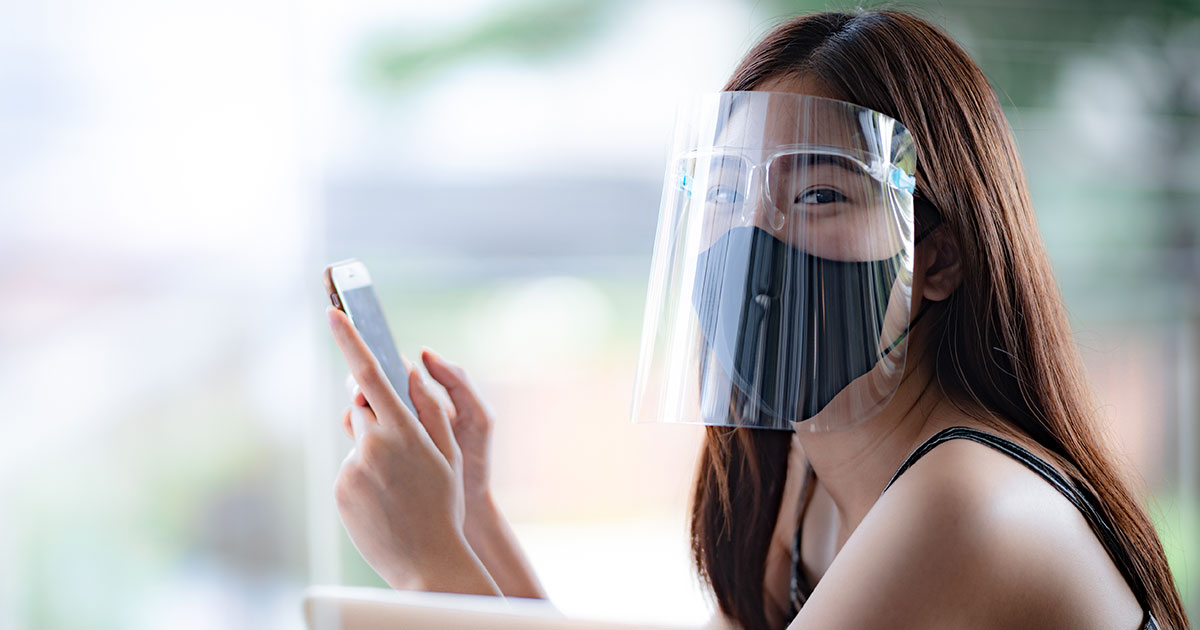
Do face shields, medical goggles or gloves protect against COVID-19?
The Centers for Disease Control and Prevention (CDC) doesn’t recommend the general public use face shields or medical goggles as a substitute for masks as a precaution against COVID-19.
The CDC, however, does officially recommend that eye protection, in addition to masks or respirators, be worn by health care workers in areas with moderate to high hospital admissions.”
If you do choose to wear a face shield or medical goggles, the CDC recommends you ensure they fit properly and you clean and disinfect them according to the manufacturer’s directions.
Following the advice of the CDC is critical, according to Jamie Almasy, director of Infection Prevention and Control for OSF HealthCare.
“If you choose to wear eye protection it is important that it fits correctly, requiring little adjustment once it is put on,” Jamie said. “It should also provide coverage to all sides – top, bottom and side to side.”
If you’re going to wear a face shield, the CDC further recommends choosing a hooded face shield or one that wraps around the sides of your face and extends below your chin.
Keep face shields and medical goggles clean
 Just like your masks, face shields and medical goggles should also be kept clean, Jamie said.
Just like your masks, face shields and medical goggles should also be kept clean, Jamie said.
“Since these are made of different materials, you may want to clean a small corner of the shield or goggle to ensure the cleaner you are using does not damage the surface,” she said. “And remember, most of these products are disposable and should be discarded when they are scratched, etched or clouded. Eye protection should be stored in a safe place between uses to protect it from scratches.
“Placing goggles, glasses or face shields above your head when you are not wearing them is not a good idea,” Jamie said. “If you will continually be removing it to see or read items, it might not be useful.”
Also, wash your hands after removing a face shield or medical googles and avoid touching your eyes, nose and mouth when removing them, according to the CDC.
The proper way to use gloves
One misconception around protecting yourself against COVID-19 is wearing gloves while shopping or out in public.
Health care workers wear gloves to keep themselves and patients safe while providing care, but they remove gloves immediately after touching a patient, clean their hands and put on new gloves before caring for another patient.
If you choose to wear gloves, but don’t remove them, clean your hands and put on new ones every time you touch something at the store, then you’re not improving your safety.
Contracting the virus
“While there is not much literature that addresses the ability to contract COVID-19 through the eyes, we know that the major source of infection is the virus coming in contact with your nose and mouth,” Jamie said.
The eyes contain a very similar cell structure of the cells lining the nose and mouth – the mucous membranes.
“Because the eyes can drain into the back of your nose and throat it is possible to spread the virus from the eyes into your nose and mouth,” Jamie said. “Another way it can be transmitted through the eyes is when an infected person rubs their eye and then spreads the virus from contaminated hands.”
Eyeglasses and sunglasses
Prescription eyewear, reading glasses and sunglasses are not protective due to the openings around the side of the frames, Jamie said.
“The protection they may provide is that they may distract the wearer from rubbing or touching their eyes,” she said. “If you are not used to wearing glasses though, they could cause the wearer to more frequently touch or adjust them, which can have the unintended consequence of having contact with their face. It could be a Catch-22.”
Together is better
“It’s important to remember that masks and eye protection have different functions. Pairing them together can increase your level of protection if used correctly,” Jamie said.
“Masks can trap droplets and particles that the wearer expels and on some levels protects the wearer from inhaling droplets and aerosols that are in the air,” she said. “Eye protection in the form of a face shield is intended to provide a barrier to the wearer from the environment.”
When it comes down to it, the best precautions to take against contracting the virus are the three Ws for everyone’s safety – wear a mask, watch your distance and wash your hands.